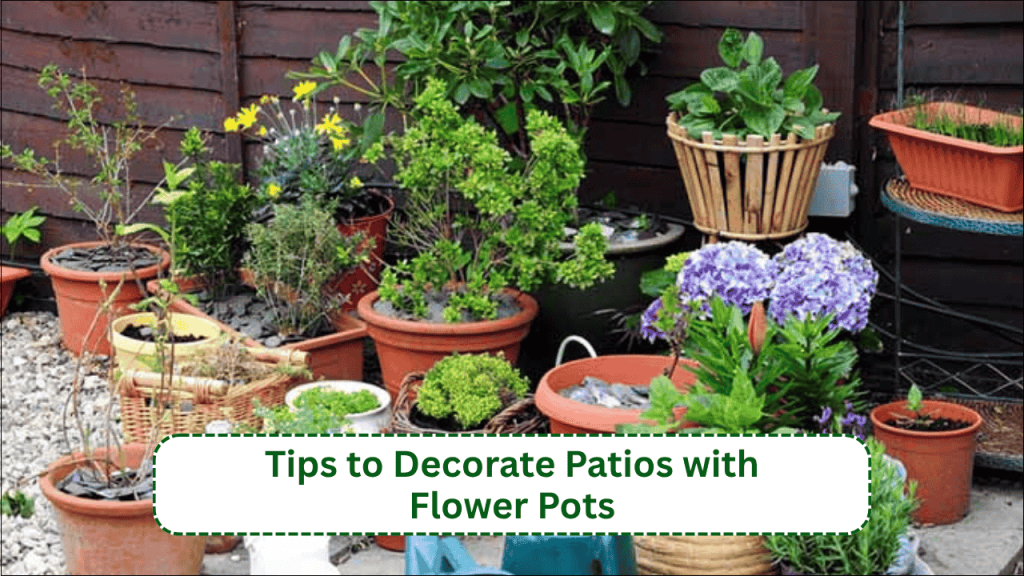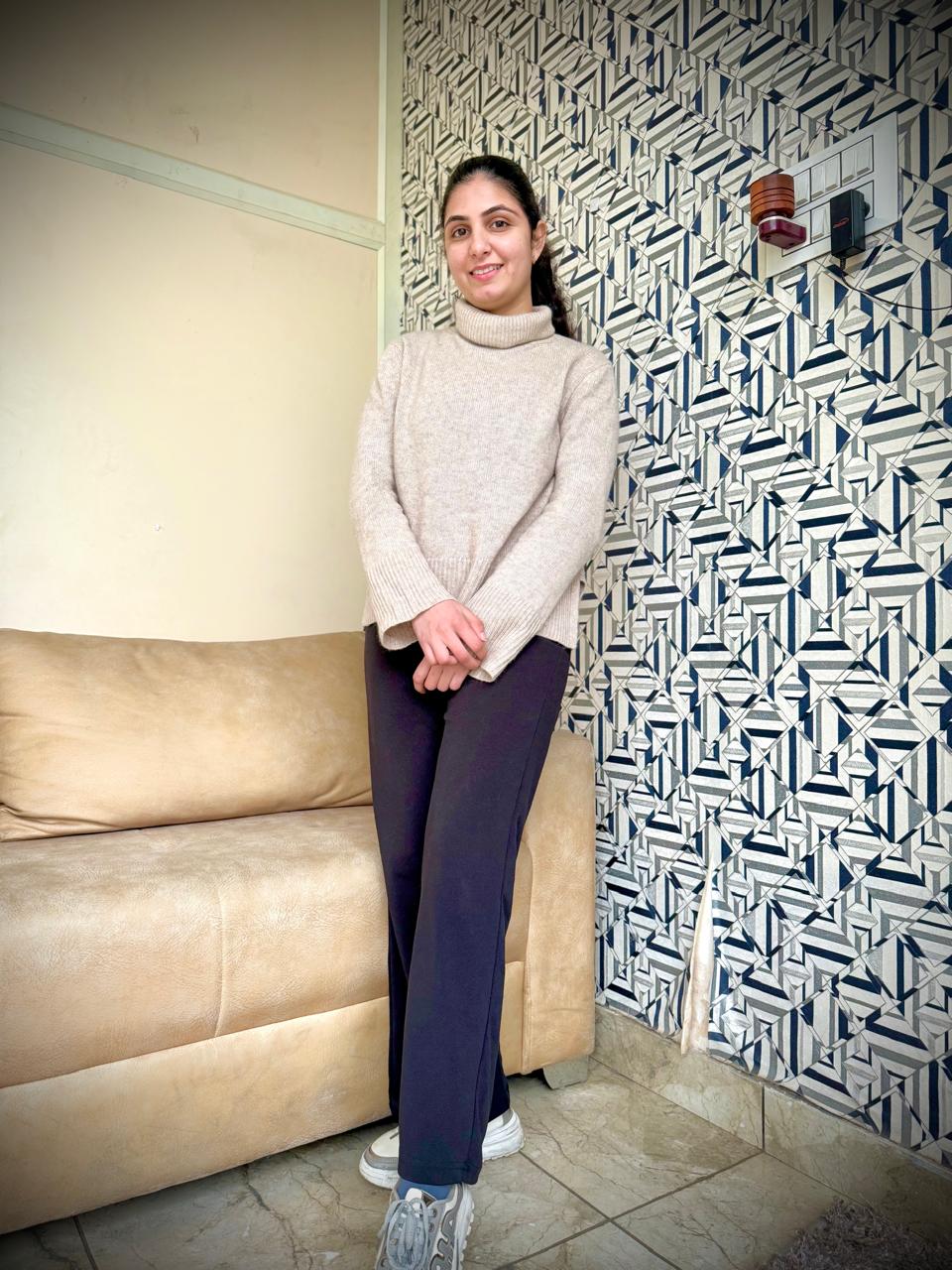
Patios serve as cherished outdoor sanctuaries where we unwind, entertain guests, and connect with nature just steps from our door. One of the most effective and accessible ways to transform any patio into a stunning outdoor living space is through the strategic use of flower pots. Whether you’re working with a sprawling backyard patio or a compact balcony, flower pots offer unlimited potential to infuse color, texture, and vibrant life into your outdoor environment.
The beauty of decorating with flower pots lies in their incredible versatility and adaptability. They provide an opportunity to create personal outdoor spaces that reflect individual style while accommodating practical considerations like space limitations, mobility needs, and changing seasonal preferences. This comprehensive guide presents ten essential tips to help you master the art of patio decoration with flower pots, transforming your outdoor area into a flourishing paradise.
Table of Contents
Why Choose Flower Pots for Patio Decoration?
Before exploring specific decorating techniques, it’s important to understand the fundamental advantages that make flower pots ideal for patio enhancement. Their versatility allows them to complement any décor style, from modern minimalist to rustic farmhouse aesthetics. The mobility factor enables easy rearrangement throughout seasons, while their space efficiency makes them perfect for small patios, balconies, or apartment courtyards. Most importantly, flower pots provide an excellent medium for personal expression, allowing you to showcase favorite plants and reflect your unique gardening personality.
1. Master the Art of Pot Selection
The foundation of successful patio decoration begins with choosing the right containers that complement both your space and design vision.
Pot Material and Characteristics Comparison
| Material | Aesthetic Appeal | Durability | Weight | Best For |
|---|---|---|---|---|
| Terracotta | Classic, earthy charm | Moderate (frost-sensitive) | Medium | Mediterranean, traditional styles |
| Ceramic | Colorful, decorative patterns | High (with proper care) | Heavy | Statement pieces, sheltered areas |
| Plastic/Resin | Modern, versatile designs | Excellent weather resistance | Light | Large patios, frequently moved arrangements |
| Metal | Contemporary, sleek appearance | Very high | Medium-Heavy | Modern, industrial design themes |
Size and Shape Strategy: Create visual interest by varying pot sizes throughout your space. Large pots work excellently as anchor pieces in corners or entryways, while smaller containers are perfect for tabletops and shelving displays. Mix cylindrical, square, oval, and bowl-shaped pots to create dynamic, engaging arrangements that avoid monotony.
2. Create Stunning Visual Layers and Heights
Effective patio design relies heavily on creating depth and visual interest through strategic height variation. This technique maximizes limited space while drawing the eye upward to create a lush, cascading garden effect.
Height Creation Methods:
- Utilize plant stands, tiered shelves, or hanging baskets to elevate pots off ground level
- Position tall plants like ornamental grasses or bamboo in background areas
- Place low-growing flowers and ground covers in foreground positions
- Stack sturdy pots or repurpose wooden crates as custom plant pedestals
3. Strategic Plant Type Combinations
Creating vibrant, eye-catching patio displays requires thoughtful combination of different plant types that complement each other in both form and function.
Plant Categories for Diverse Patio Appeal
| Plant Type | Primary Function | Examples | Seasonal Interest |
|---|---|---|---|
| Flowering Plants | Color and seasonal display | Petunias, geraniums, begonias, marigolds | Spring through fall |
| Foliage Plants | Texture and year-round interest | Hostas, ferns, coleus | Continuous |
| Herbs | Practical beauty and fragrance | Rosemary, basil, mint, thyme | Growing season |
| Succulents/Cacti | Low-maintenance structure | Echeveria, jade plants, barrel cacti | Year-round |
The Thriller, Filler, Spiller Rule: When combining plants in single containers, follow this proven design principle:
- Thriller: Tall, eye-catching centerpiece plant
- Filler: Medium-height plants surrounding the thriller
- Spiller: Trailing plants like ivy or sweet potato vine cascading over edges
4. Develop Cohesive Color Themes
A well-planned color palette elevates patio aesthetics from amateur to professional-looking design. Consider these proven color strategies:
Monochromatic Approach: Different shades of the same color create sophisticated, calming environments. Complementary Colors: Use opposite color wheel combinations (purple/yellow, blue/orange) for vibrant, energetic displays. Seasonal Themes: Bright, bold colors for summer energy; pastels for spring freshness; rich, warm hues for autumn coziness.
5. Maximize Vertical Space Efficiency
Small patios and balconies benefit enormously from vertical gardening solutions that save precious floor space while adding lush, overflowing visual appeal.
Vertical Garden Solutions
| Solution Type | Space Requirement | Plant Capacity | Installation |
|---|---|---|---|
| Hanging Baskets | Overhead clearance | 3-5 plants per basket | Simple hook mounting |
| Wall Planters | Vertical wall space | Variable | Wall bracket mounting |
| Railing Pots | Railing availability | 1-2 plants per pot | Clip-on attachment |
| Vertical Garden Panels | Large wall area | 10-20 plants | Frame mounting |
Consider macrame hangers for bohemian aesthetics, metal or wooden wall racks for herbs and small flowers, and vertical garden panels with multiple integrated pots for maximum plant density.
6. Incorporate Decorative Support Elements
Elevate flower pot presentations with decorative plant stands, side tables, and shelving units that showcase different containers at varying heights while creating more engaging overall setups.
Vintage stools, wrought-iron stands, or rustic wooden benches can double as plant displays, giving patios collected, eclectic character that reflects personal style and creativity.
7. Add Magical Evening Lighting
Transform patio flower arrangements into enchanting evening displays through strategic lighting integration:
Lighting Options: String fairy lights around plants, use solar-powered stake lights in larger pots, place tea lights or battery-operated candles on tabletops beside arrangements. This creates magical, cozy atmospheres perfect for evening gatherings or quiet outdoor relaxation.
8. Embrace Seasonal Arrangement Changes
Keep patio displays fresh and interesting by updating flower pot contents with each season:
Seasonal Plant Rotation Schedule
| Season | Recommended Plants | Color Palette | Special Features |
|---|---|---|---|
| Spring | Tulips, daffodils, pansies | Soft pastels, fresh greens | Bulb displays, early bloomers |
| Summer | Petunias, marigolds, zinnias | Bright, vibrant colors | Heat-tolerant, long-blooming |
| Autumn | Chrysanthemums, ornamental cabbage | Warm oranges, deep reds | Textural interest, fall foliage |
| Winter | Evergreens, holly, decorative branches | Rich greens, berry accents | Structural plants, festive elements |
9. Explore Creative Container Alternatives
Think beyond traditional pots by repurposing unique items into creative plant containers that add character and personal charm:
Repurposed Container Ideas: Old watering cans, metal buckets, wooden crates, painted tin cans, ceramic bowls, and lined wicker baskets. These one-of-a-kind planters create conversation pieces while reflecting individual creativity and environmental consciousness.
10. Balance Aesthetics with Practical Considerations
While visual appeal remains important, successful patio gardening requires attention to practical elements that ensure plant health and long-term success:
Essential Practical Elements:
- Ensure proper drainage through drainage holes or gravel layers
- Choose appropriate plants for specific climate and light conditions
- Group plants with similar water and care requirements
- Use quality potting soil with slow-release fertilizer for optimal plant health
- Consider seasonal weather protection for sensitive plants
Creating Your Personal Patio Paradise
Successful patio decoration with flower pots requires balancing creative vision with practical gardening knowledge. Start with a clear plan that considers your space limitations, style preferences, and maintenance capabilities. Experiment with different combinations of pot sizes, plant types, and arrangement styles to discover what works best for your specific environment.
Remember that patio decoration is an ongoing process that evolves with seasons, plant growth, and changing personal preferences. Don’t be afraid to rearrange, replace, or refresh elements as needed to maintain visual interest and plant health.
The key to creating a stunning patio lies in thoughtful plant selection, creative container choices, and strategic arrangement techniques that maximize both beauty and functionality. Whether you prefer minimalist designs with monochrome pots or vibrant jungle-like displays with diverse blooms and foliage, these ten essential tips provide the foundation for transforming any outdoor space into a personal paradise.
By implementing these strategies and allowing your creativity to flourish, you’ll discover that a few carefully chosen flower pots can completely transform your outdoor sanctuary into a space you’ll love spending time in throughout the year.
Frequently Asked Questions
Q: What’s the best material for patio flower pots in changing weather conditions? A: Plastic or resin pots offer the best weather resistance and are lightweight for easy rearrangement throughout seasons.
Q: How do I create height variation without expensive plant stands? A: Stack sturdy pots, repurpose wooden crates, or use upturned buckets as DIY pedestals for budget-friendly height variation.
Q: What’s the easiest way to ensure proper drainage in decorative containers? A: Drill drainage holes in containers or add a 2-3 inch layer of gravel at the bottom before adding potting soil.
Q: Which plants work best for low-maintenance patio pot arrangements? A: Succulents, ornamental grasses, and herbs like rosemary require minimal care while providing year-round interest.
Q: How often should I change my seasonal patio plant arrangements? A: Update arrangements 3-4 times annually to align with seasonal changes and maintain fresh, vibrant displays.



1gc0ak